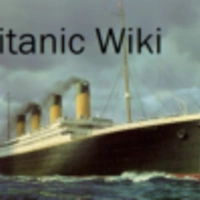The RMS Titanic breaking in half was an event during it's sinking. It occurred just before the Titanic went underwater, when the ship suddenly snapped in two pieces, sending the sinking stern crashing down into the water and allowing the bow section to sink beneath the waves. Many survivors, such as Charles Lightoller didn't see the break up, as the lights suddenly went out, plunging the ship into total darkness. However, others like Jack Thayer saw cracks forming in the ship. It was unknown to the common people before the wreck was discovered in 1985. Many questions were asked about the break-up. "Did the break-up occur in front of the third funnel or behind it?" "Did the bow rise itself up?" Nobody knows how the break-up occurred, but scientists have confirmed that it did happen, and it was caused by an uneven distribution of weight to the Titanic's stern.
At the official inquiry of the sinking of the Titanic, it was concluded that the ship sank in one piece and was not challenged until the wreck of the once-great ocean liner was discovered in 2 main sections, about 1/2 mile apart in 1985.
Many survivor accounts of the breakup completely contradicted each other, some examples:
Jack Thayer:
Carrie Chafee: "The ship sank steadily until at the last when it plunged rapidly. Just before going down it seemed to rip, breaking into three parts into which the ship was divided. First the middle seemed to go down, lifting bow and stern in the air then twisted the other way, throwing the middle up. Finally, the bow went under and it plunged certain last."
Third Officer Pitman: "She went right up on end and went down perpendicularly, she did not seem to be broken in two."
Edward Buley: She went down as far as the after funnel and then there was a little roar as though the engines had rushed forward and she snapped in two and the bow part went down and the after part came up and stood up for five minutes before it went down, it was horizontal at first and then went down. We could see the after part float and there was no forepart to it, I think she must have parted where the bunkers were. She parted at the last because the after part of her settled out of the water horizontally after the other part went down, you could see her propellers and everything, her rudder was clear out of the water, you could hear the rush of machinery and as she parted in two, the after part settled down again and we thought the after part would float altogether. The after part uprighted herself for about five minutes and then tipped over and disappeared, going down head-foremost and not on the side."
Alexander Littlejohn: "We watched her like this for some time and then suddenly she gave plunge forward and all the lights went out, her stern went right up in the air, there were two or three explosions and it appeared that the stern part came down again and righted itself."
